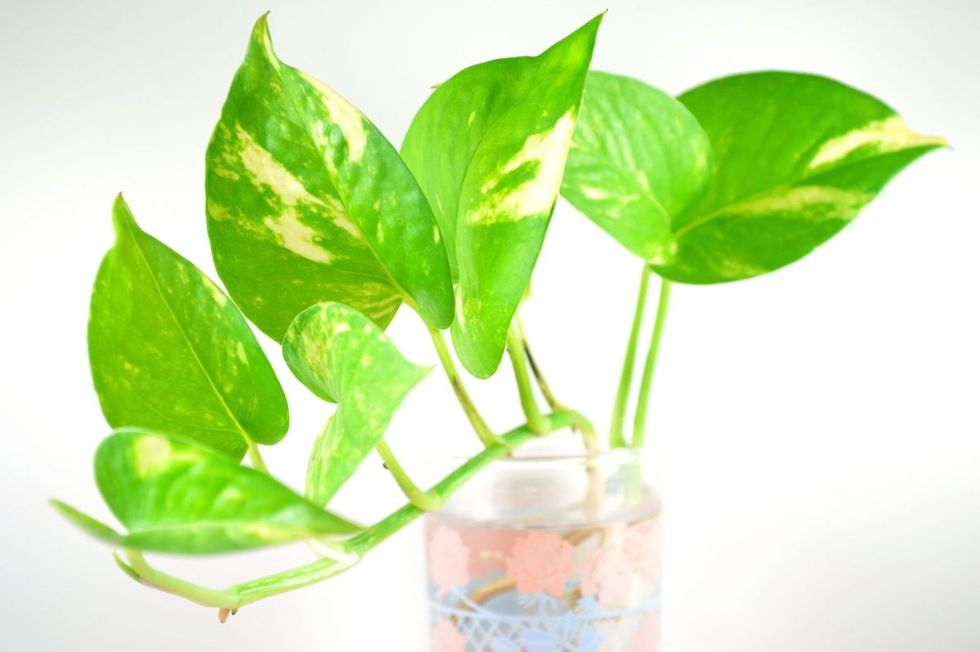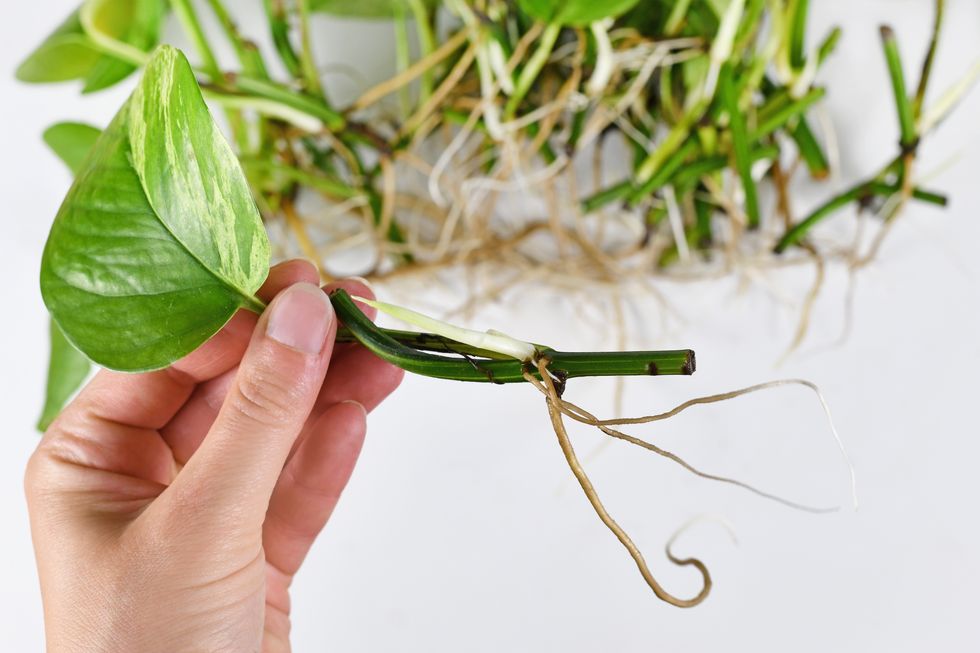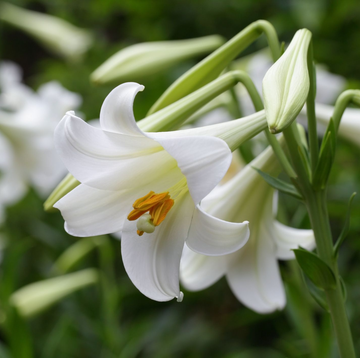Propagating pothos is easy, fun, and a great way to create new indoor houseplants from a single cutting. Whether you prefer to root your cuttings in water, soil, or moss, this method is beginner-friendly and a great way to share the beauty of your plant with others.
Plus, pothos plants are resilient and thrive with minimal care, making propagation a stress-free way to get new plants without the hassle. In just a few simple steps, you can create stunning new plants that will bring new life to your home or become the perfect green gift for a friend.
How to propagate pothos in water:
You don’t need any fancy tools to propagate pothos in water. Simply have a sharp knife or scissors and a glass cup or vase. It only takes three steps to propagate pothos in water so this method is great for beginners.
- Take a cutting of your pothos. Use a sharp knife or scissors to cut off a piece of plant from the end of the original plant. If you have a very long stem, you can cut it into a few pieces to root separately. Just make sure every section retains a few leaves and nodes, which is where the leaf attaches to the stem. Side note: The aerial root is that little brown bumpy thing along the stem; it’s what helps the plant climb when it’s growing in the wild, and it’s also where new roots may form when you’re propagating it.
- Place the cuttings in water. Put the cut ends of the stems in a glass of water, making sure no leaves are submerged but that the node and aerial root are under water. Place the glass in a warm-ish room in bright, indirect light (not direct sunlight). Change the water every few days so microbes don’t affect growth.
- Pot your rooted cutting. When they’re a few inches long, place your newly-rooted plant in fresh potting soil. Use a chopstick to make a hole in the soil, pop your cutting in, and press the soil around it. You can put multiple cuttings in the pot to make a full plant instantly. Keep the soil lightly moist (not soggy) the first few weeks, and keep the pot in bright indirect light. Remember: Not all cuttings will survive the transition from water to soil (that’s just nature!), so don’t feel bad if you have a few fails.
How long does it take for pothos to root in water?
After you trim the cuttings and place them in water, roots typically start to form in about 10 days. Once this happens you can pot your pothos in soil. Don’t procrastinate because the roots will have difficulty adapting to soil if you allow them to remain in water for too long.
How to propagate pothos in soil or moss:
If you want to skip the water phase, propagating pothos in soil or moss is an effective alternative. Both methods help create a strong root system without needing to transfer from water to soil.
In soil:
Take a cutting from your pothos and make sure it includes a node. Place the cutting into a pot filled with moist, well-draining soil and lightly press it down. Keep the soil moist (not soggy) and place it in a bright, indirect light spot. In a few weeks, roots should form, and the cutting can be transferred to a larger pot.
In moss:
Soak sphagnum moss, then wrap it around the cutting, covering the node. Place the cutting in a humid environment (like a plastic bag or container) and ensure it stays in indirect light. In a few weeks, you'll see roots forming, and the cutting is ready to pot.
Both methods are simple and effective, with moss propagation providing an extra boost of humidity for faster rooting.
Will pothos grow back after cutting?
Yes, you can wield your scissors freely, knowing that pothos plants are quite resilient and can typically grow back after being cut! When you prune a pothos, new growth often emerges from the nodes below where you cut. Still, there are a few things to keep in mind when cutting your pothos.
For one, it's important to make clean cuts with sharp, sterile tools to minimize stress and promote healthy regrowth. You should also ensure that you don't cut off too many stems at once, as this can lead to overwatering and root rot due to the reduced rate of the plant's photosynthesizing abilities. Additionally, providing proper care such as adequate light, water, and nutrients can encourage robust growth after pruning!
Arricca Elin SanSone is a writer, editor, and content creator who specializes in lifestyle and gardening. With a background in health reporting, she applies these same research skills when writing about the science of growing things. She trials new plants in her expansive garden, and her houseplant collection consists of 60+ varieties. Arricca has written thousands of articles for publications such as Country Living, House Beautiful, Good Housekeeping, Prevention, VERANDA, Southern Living, and more. She’s happiest when digging in the dirt, baking, or spending time with the people and dogs she loves.














